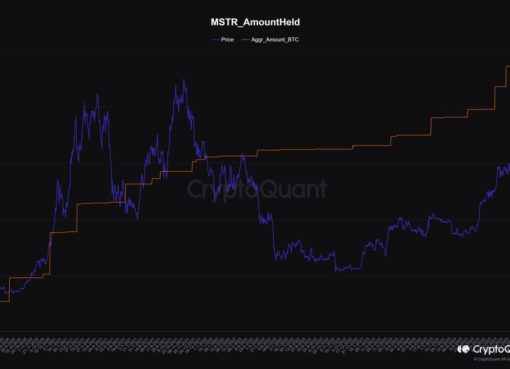Bitcoin trended higher along with many traditional markets Tuesday before changing direction and falling as U.S. stock trading closed.
Over the past 24 hours, bitcoin (BTC) fell more than than 1 percent as of 20:30 UTC (4:30 p.m. EDT). By contrast, ether (ETH) rose by 1.5 percent. Most of the other cryptocurrencies were up as well.
Notable asset performances on CryptoX’s big board include lisk (LSK), up 1 percent, IOTA (IOTA) climbing 1 percent and litecoin (LTC), also up 1 percent. Assets trending downward include monero (XMR) down 3.5 percent and bitcoin SV (BSV), in the red 2.4 percent. All 24-hour price changes are as of 20:30 UTC (4:30 PM EST) Tuesday.
In the traditional markets, Japan’s Nikkei 225 index closed higher by 2 percent. This comes on the heels of the Japanese government introducing a nearly $1 trillion stimulus package Monday. Europe’s FTSE 100 ended the day up 1.3 percent. In the U.S., the S&P 500 closed New York’s trading day almost flat, down 0.16 percent.
After climbing from the $6,800 level Monday, bitcoin traded in a sideways $7,200-$7,400 range before dropping into $7,100 territory as the U.S. markets closed little changed.
For the year to date, bitcoin is up slightly, almost 2 percent as of Tuesday. Tepid as that performance sounds, it beats stocks. So far in 2020, the S&P 500 is in the red over 16 percent, the Nikkei 225 is down almost 20 percent and the FTSE is down almost 25 percent.
Bitcoin’s ability to ride traditional market rallies upward has been noticeable to traders lately.
“When the market has gone up, bitcoin has as well,” said Paul Ciavardini, head of trading for U.S.-based cryptocurrency exchange itBit.
The correlation was less pleasant on March 13, when U.S. stocks suffered their worst day since 1987 and bitcoin dropped precipitously as crypto derivatives exchange BitMEX experienced a staggering $700 million in liquidations.
Further, while bitcoin has done well against equities, gold is a tough asset to beat. “This market shows how bitcoin and gold are very different assets. Gold is a proven safe haven whereas bitcoin is correlated to risk assets at this time,” Ciavardini said.
The yellow metal is up 10 percent since the start of the year, even though it slipped a hair Tuesday, ending the session less than 1 percent down.

“People are liquidating positions and moving into gold, which has universal appeal,” said Ciavardini.

There’s some excitement among stakeholders that cryptocurrency is proving to be some kind of haven. Maybe not a classic safe haven like gold, but a haven nonetheless.
“Bitcoin may be looking particularly lackluster given the carnage in the equities market but it is easy to forget that it fell to just under $4,000 at the peak of the March bloodbath and has since rebounded all the way to $7,400,” said Denis Vinokourov, head of research at institutional brokerage BeQuant.
Traders like to see volatility because arbitrage exists in spreads on thinly traded exchanges versus over-the-counter desks, and money is being made on the exchanges.
“Market volatility is your friend, if approached correctly. Based on the current volatility levels there is plenty of upside yet to come,” said Vinokourov.
Of course, volatility-loving traders are much different than long-term cryptocurrency investors who just buy and hold. In that regard, bitcoin has been doing well versus stocks – can it continue to do so?
“In the short term, I expect the momentum to continue and the price will go further up,” said Nemo Qin, an analyst at multi-asset brokerage eToro. “The price could be driven by rising COVID-19 cases around the world, especially in the U.S.”
Disclosure Read More
The leader in blockchain news, CryptoX is a media outlet that strives for the highest journalistic standards and abides by a strict set of editorial policies. CryptoX is an independent operating subsidiary of Digital Currency Group, which invests in cryptocurrencies and blockchain startups.




